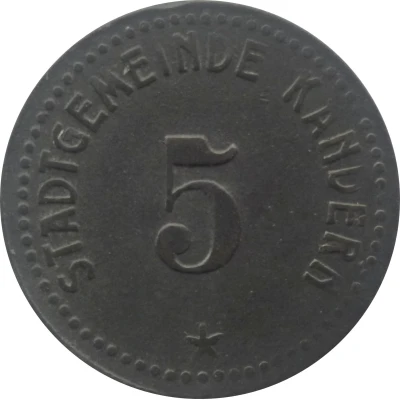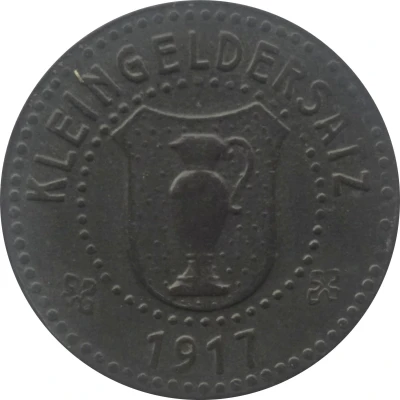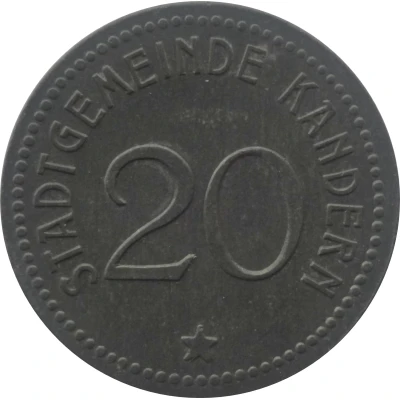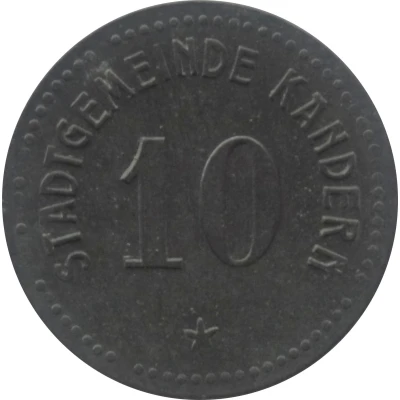
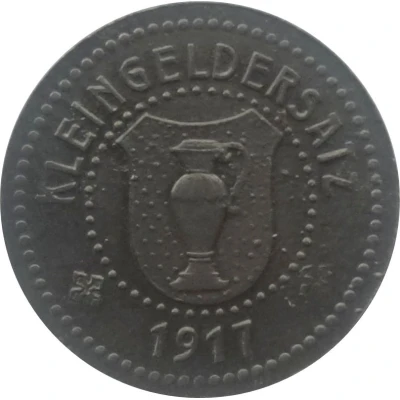

© Willem63 (CC BY-NC-SA)
10 Pfennigs - Kandern
1917 year| Zinc | 2.10 g | 20.1 mm |
| Issuer | City of Kandern (Federal state of Baden) |
|---|---|
| Emperor | William II (Wilhelm II) (1888-1918) |
| Type | Standard circulation coin |
| Year | 1917 |
| Value | 10 Pfennigs (10 Pfennige) (0.10) |
| Currency | Mark (1914-1924) |
| Composition | Zinc |
| Weight | 2.10 g |
| Diameter | 20.1 mm |
| Thickness | 1.24 mm |
| Shape | Round |
| Technique | Milled |
| Orientation | Medal alignment ↑↑ |
| Demonetized | Yes |
| Updated | 2024-10-04 |
| Numista | N#29012 |
|---|---|
| Rarity index | 71% |
Reverse
Pearl rim, lengend above date below pearl circle with Coat of Arms centered
Script: Latin
Lettering:
KLEINGELDERSATZ
1917
Edge
Plain
Comment
Issuing body: [Stadt, Baden].Interesting fact
The 10 Pfennigs - Kandern 1917 coin from the City of Kandern (Federal state of Baden) made of Zinc weighing 2.10 g is interesting because it was produced during a time of economic turmoil in Germany, specifically during the hyperinflation period of the 1920s. The coin's value was worth 10 Pfennigs, a relatively small amount, but it was still an important denomination during that time. Despite the economic challenges, the coin was made of zinc, which was a more affordable material than other metals, and it was designed to be easily recognizable and accessible to the general population. Today, this coin is a valuable collector's item and a piece of history that reminds us of the economic struggles of the past.
Price
| Date | Mintage | VG | F | VF | XF | AU | UNC |
|---|---|---|---|---|---|---|---|
| 1917 | 26100 | - | - | - | - | - | - |
Values in the table are based on evaluations by sales realized on Internet platforms. They serve as an indication only for 10 Pfennigs - Kandern 1917 coin.
